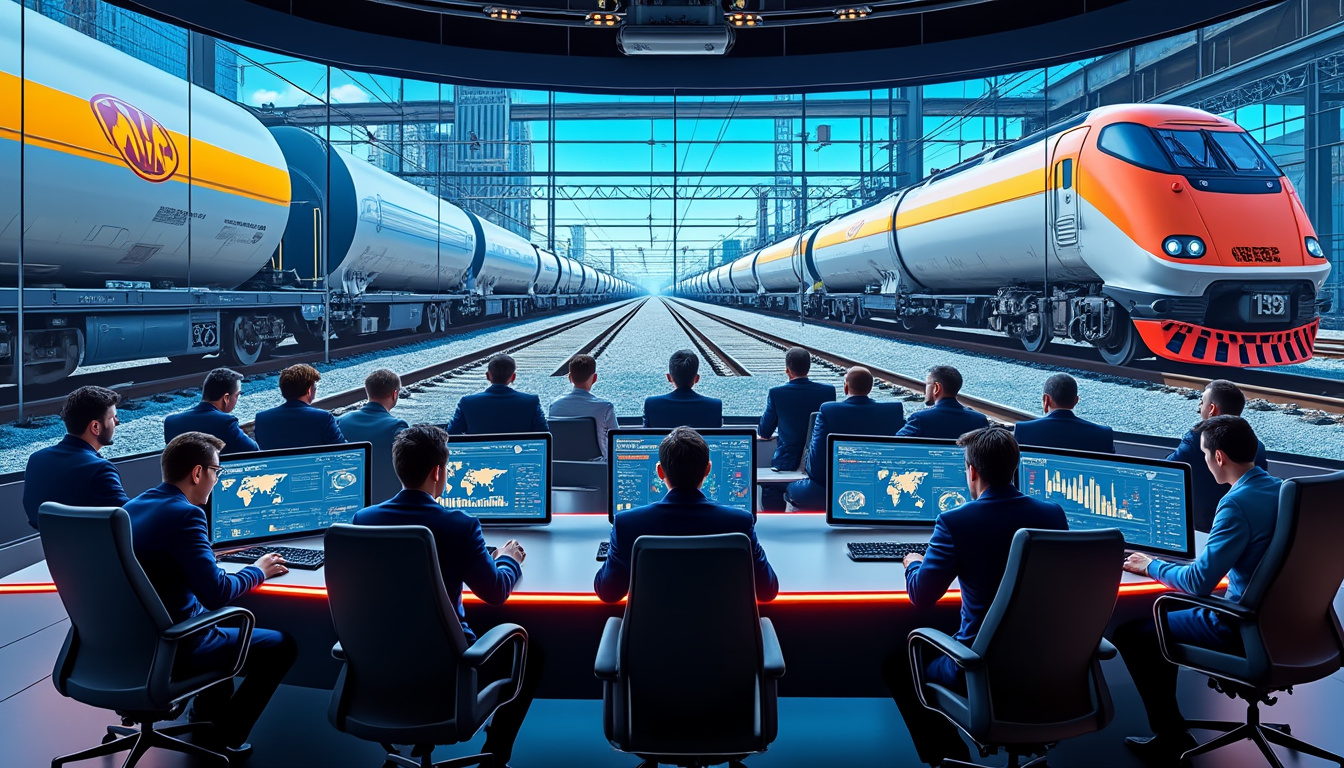In an increasingly connected world, where safety and efficiency are paramount, a digital revolution is taking place in the hazardous liquid transportation sector. Technological innovations are radically transforming the way tanker cars operate, optimizing operations while ensuring unprecedented levels of safety. This development marks a strategic turning point for companies in the sector, which must adapt to growing safety and sustainability requirements. At the heart of this dynamic, the creation of innovative digital platforms is proving to be a major asset for logistics players. This article explores in depth how these innovations are transforming the hazardous liquid transportation landscape, the resulting challenges, and the practical solutions that support this transition.
The Challenges of Hazardous Liquid Transportation
The transportation of hazardous liquids represents a considerable challenge for the logistics industry. In addition to the strict regulations with which companies must comply, the inherent risk of transporting potentially toxic or flammable substances requires increased vigilance. Leaks or accidents can have catastrophic consequences for both the environment and the human environment.
Industry stakeholders must navigate a multitude of risks, including:
- Regulatory Compliance: Legislation varies by region and imposes stringent requirements for safety and operational control.
- Risk Management: Anticipating and managing the risks associated with the transportation of hazardous liquids is essential to minimize accidents.
- Operational Costs: Inefficient operations management can lead to significant, unforeseen costs.
These challenges are driving companies to seek innovative solutions. This is where the digital revolution and the emergence of advanced technologies that promise to radically transform these issues come into play.
InnoWagon Solutions: A Response to the Challenges
InnoWagon Solutions is one of several programs integrating digital innovations to revolutionize the transportation of hazardous liquids. Through the use of advanced monitoring systems and data analysis tools, this initiative aims to optimize operations while ensuring rigorous monitoring of each stage of transportation, from loading to delivery.
These solutions include:
- Logistics Security Systems: Integration of sensors to monitor pressure, temperature, and other critical parameters in real time.
- Secure Liquid Management: Digital security protocols to limit access to sensitive information.
- Digital Cargo Innovations: Software to automate and centralize the documentation required for the transportation of hazardous substances. Solution
| Description | Benefits | Logistics Security Systems |
|---|---|---|
| Monitoring of critical parameters via tailored sensors | Reduced risk of accidents | Secure Liquid Management |
| Access protocols for information protection | Minimization of sensitive information leaks | Digital Cargo Innovations |
| Automation of logistics documentation | Time savings and error reduction | By implementing these solutions, companies position themselves as market leaders while increasing their resilience to threats to the transport of hazardous liquids. The benefits are not only commercial but also societal, strengthening public confidence in the transport of sensitive materials. |
Digital transformation: towards improved efficiency
The digitalization of operations, particularly through the use of the Secure Transport platform, offers a multitude of benefits for companies transporting and shipping hazardous liquids. In 2025, many companies will adopt these tools to increase their efficiency and operational agility. The platform allows them to centralize logistics operations, improve cargo traceability, and promote seamless communication between all stakeholders in the supply chain.
The various features of digital platforms
These digital platforms offer a range of features that adapt to the specific needs of the industry:
Real-time tracking:
- Allows operators to view the location and status of tank cars at each stage of transport. Automated alerts:
- Notifications in the event of a security breach or exceedance of temperature/pressure thresholds. Detailed reporting:
- Retrospective analyses of performance and incidents to improve future processes. Functionality Benefits
| Contribution to safety | Real-time monitoring | Increased operational visibility |
|---|---|---|
| Rapid response to detected anomalies | Automated alerts | Incident prevention |
| Early warning of potential hazards | Detailed reporting | Optimization of operational processes |
| Continuous improvement of safety standards | This digital transformation also triggers a value chain that promotes cost savings and sustainable development. With close monitoring and rigorous planning, companies can not only comply with regulatory standards but also anticipate future needs, thus optimizing their carbon footprint. | Regulation and liability in the secure transportation of liquids |
The regulatory framework surrounding the transport of hazardous liquids is complex and requires a thorough understanding of the laws in force at the local, national, and international levels. Compliance with these regulations is crucial for the smooth running of logistics operations and the security of the entire process.
Key regulatory obligations
Businesses must comply with several regulatory obligations, which include:
Identification and classification of substances:
Ensure that any liquid transported is correctly classified according to current standards.
- Employee training: Ensure all employees are trained in safety procedures and risk management.
- Regular inspection of equipment: Ensure that all tank cars and packaging meet safety standards.
- Regulatory obligation Description
| Consequences of non-compliance | Identification and classification of substances | Assessment of potential liquid risks |
|---|---|---|
| Financial penalties and endangering operations | Employee training | Safety practices awareness programs |
| Increased risk of accidents | Regular inspection of equipment | Verification of tank car safety standards |
| Withdrawal of operation certification | At every stage, the responsibility lies with managers and operators to ensure that all measures are followed to ensure the safe transport of hazardous liquids. This requires constant commitment and increased vigilance in managing daily operations. | The future of hazardous liquid transportation: innovations and sustainability |
Looking ahead to 2025, the hazardous liquid transportation industry faces growing expectations for sustainability and innovation. Companies are seeking to differentiate themselves by adopting environmentally friendly practices and cutting-edge technologies that can transform their operations.
Trends to Watch
Some key trends are emerging in the future of hazardous liquid transportation:
Tank Plus Technology:
Implementation of smart railcars equipped with sensors to monitor cargo status and prevent incidents.
- Digital EcoWagon: Integration of digital solutions to optimize routes and reduce carbon footprint.
- Smart Liquid Transportation: Development of integrated systems for load management and tracking, thus maximizing efficiency. Trend
- Description Anticipated Impacts
| Tank Plus Technology | Sensor-equipped Railcars | Reduced Leaks and Improved Incident Management |
|---|---|---|
| Digital EcoWagon | Logistics Optimization Solutions | Reduced Overall Carbon Footprint |
| Smart Liquid Transportation | Integrated Load Management Systems | Improved Logistics Efficiency |
| These innovations present exciting opportunities for industry players. By embracing these trends, hazardous liquid transportation companies can not only improve their operations but also contribute positively to the health of the planet while meeting the expectations of increasingly sustainability-conscious consumers. |




